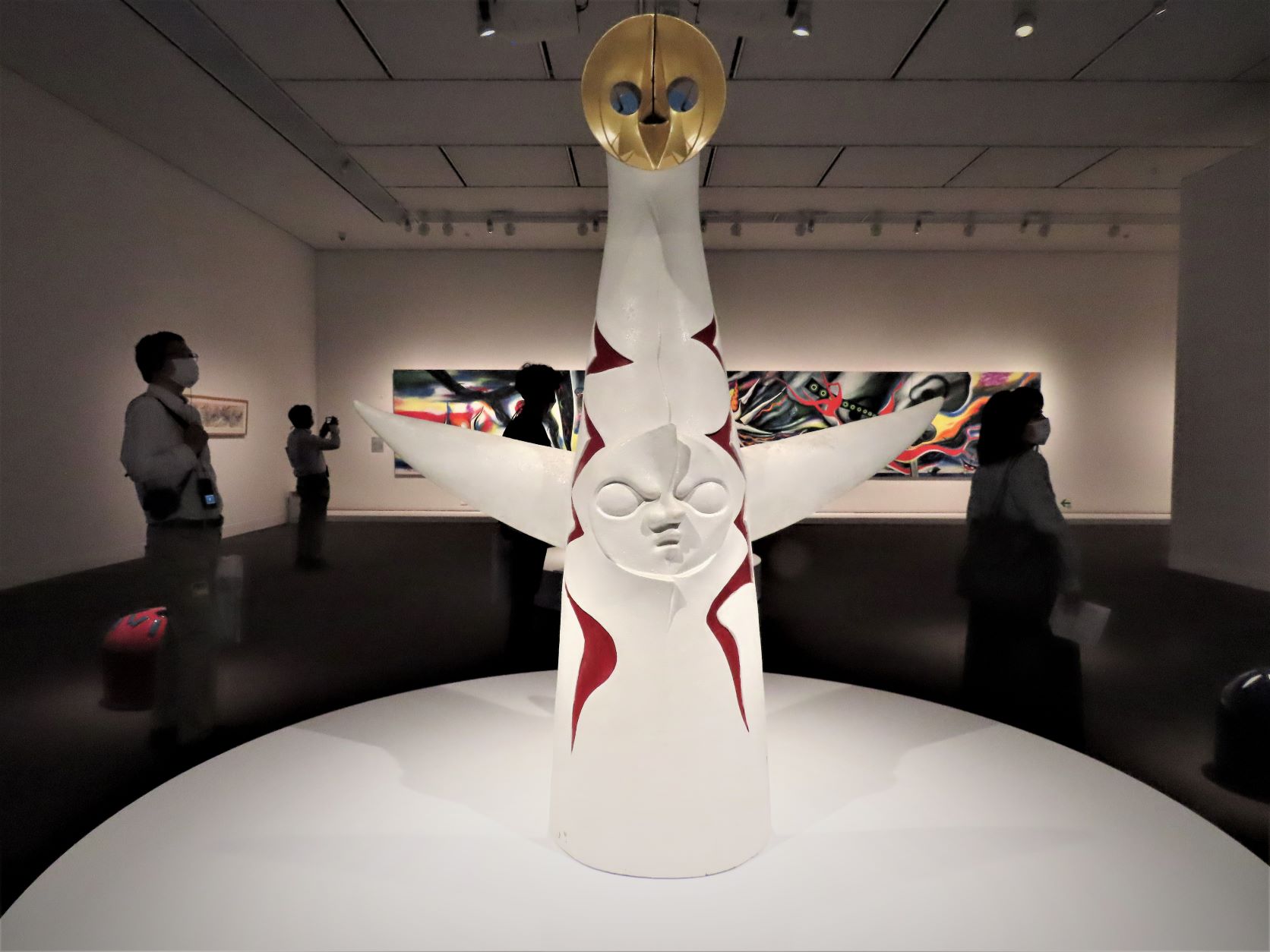
Taro Okamoto is the most popular and well-known artist in post-war Japan.
This autumn, the Tokyo Metropolitan Art Museum will hold its largest retrospective exhibition titled "Exhibition Taro Okamoto."
We will report on the press preview held the day before the event and introduce some of the contents.
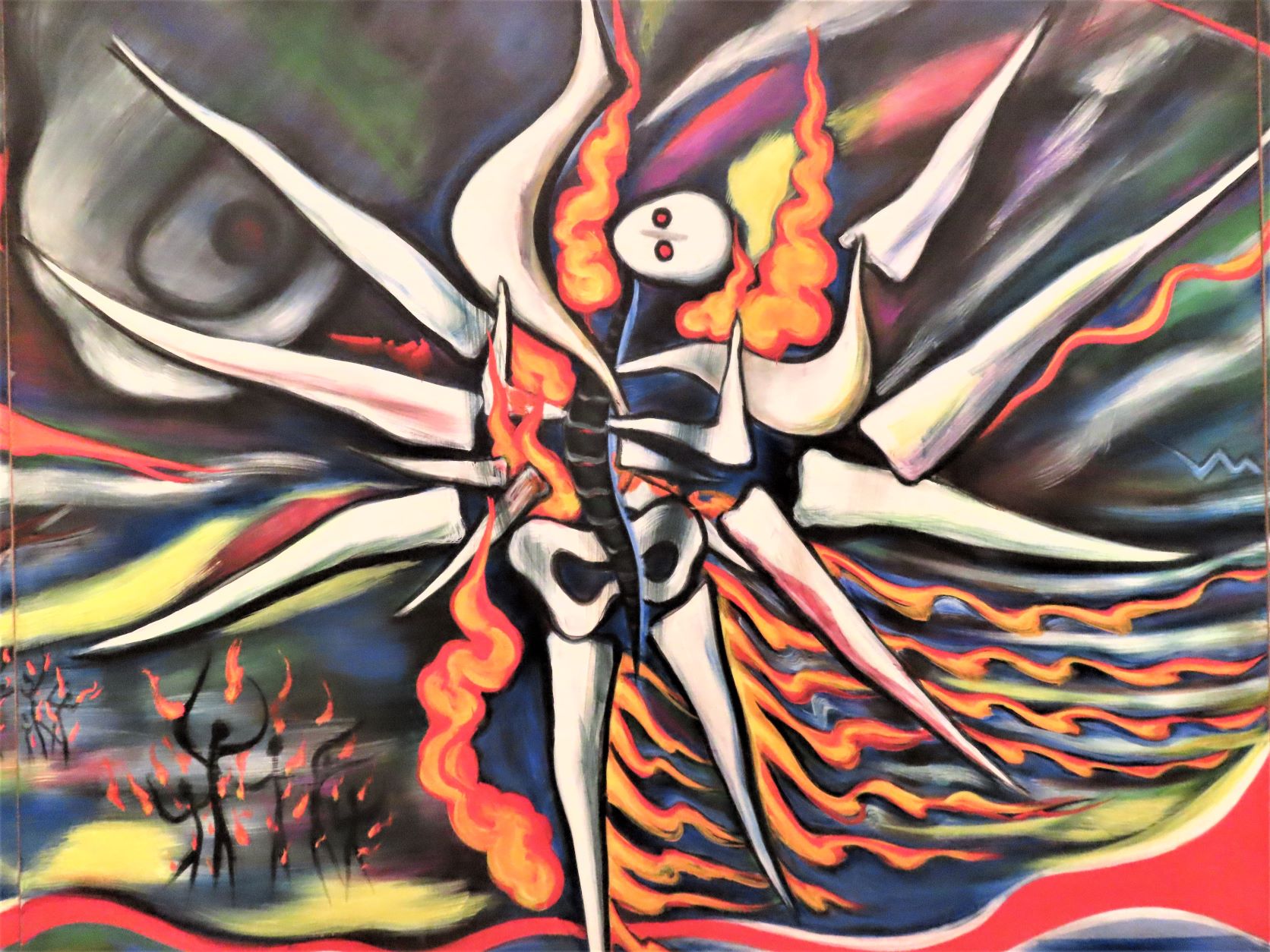
From "Myth of Tomorrow" (1968)
In Paris I learned to live as a whole human being.
Not limited to one profession such as a painter or a sculptor,
Live more broadly as a human being, as a whole being.
Words That Break Walls, East Press, 2005
It is said that once Taro Okamoto was asked, "Is this your main job?"
“Human beings—human beings who live furiously as whole beings.”
Taro Okamoto created a succession of works with overwhelming impact, ranging from paintings, sculptures, public art, to daily necessities.
Despite being one of the most well-known Japanese artists since the end of the war, it can be said that he strongly refused to be recalled by "art" itself. That's where his mystery lies and what makes him interesting.
Works from the prime of life that led the avant-garde art movement, unique art born from a folklore perspective, public art aimed at the masses, and the Tower of the Sun. This exhibition is a long-awaited retrospective that introduces the whole picture of "Human Taro Okamoto" on the largest scale ever.
Experience the works of “TARO” that are alive today!

Exhibition hall entrance. My eyes are suddenly captivated by the presence of the mysteriously lit Glowing Sculpture (1967) (Taro Okamoto Museum of Art, Kawasaki)
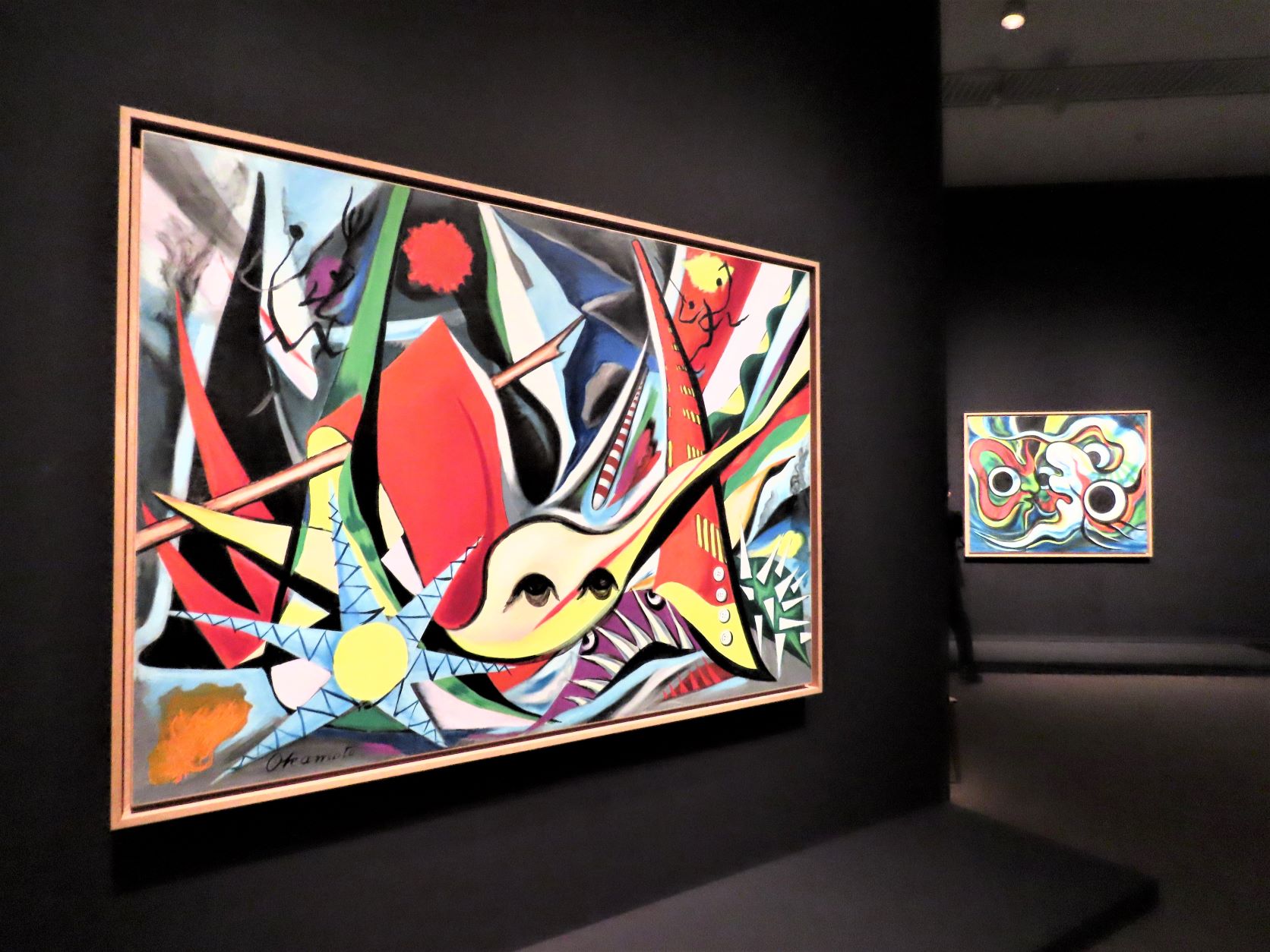
From left to right: Blue Sky (1954) (Taro Okamoto Museum of Art, Kawasaki), Staring Eyes (1978) (Taro Okamoto Museum of Art, Kawasaki)
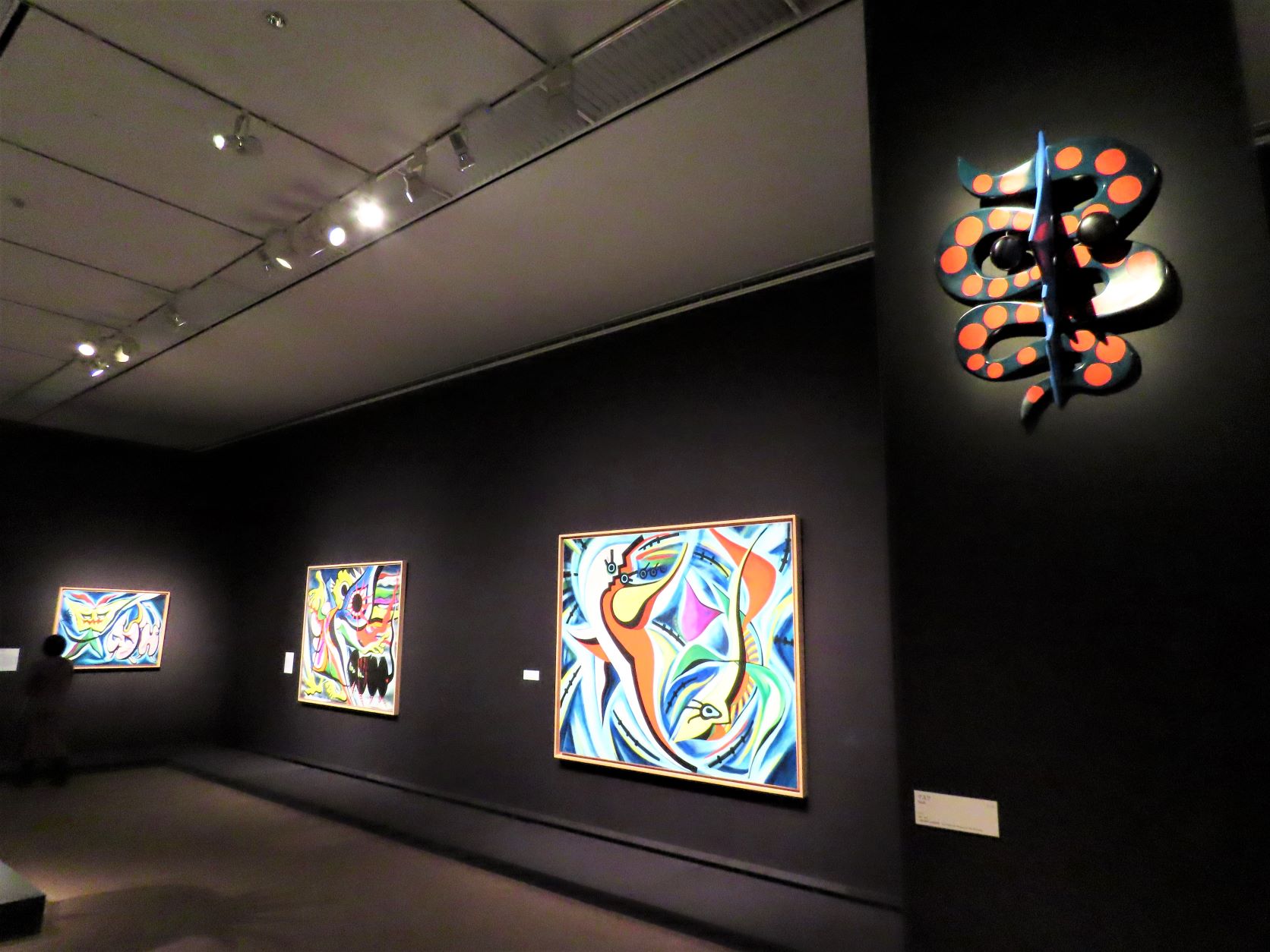
There is no particular route on the first basement floor of the exhibition hall, so you can face Taro Okamoto's works as your heart desires.
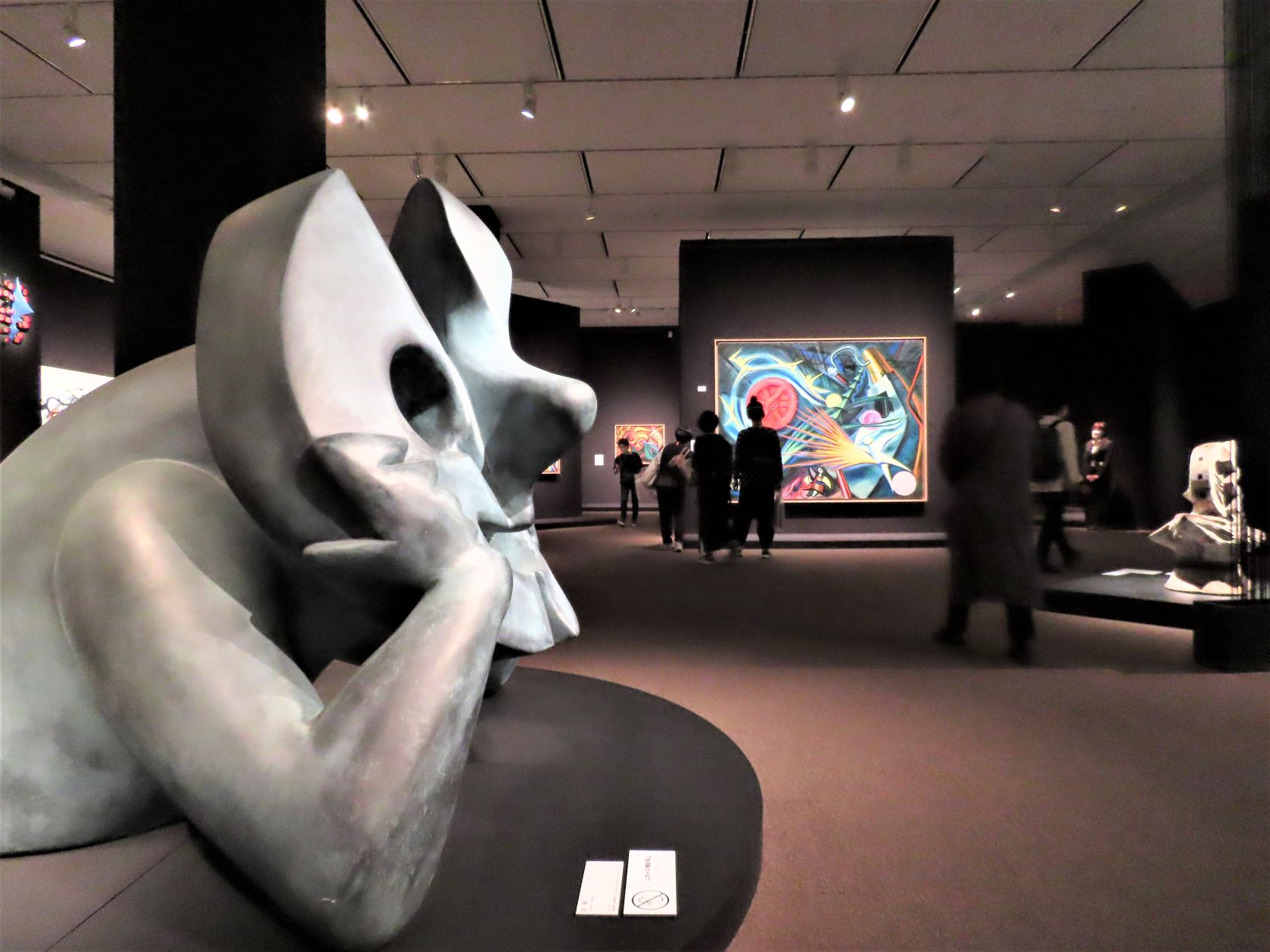
A large number of sculptures are also on display. Young Dream (1974) (Taro Okamoto Museum of Art, Kawasaki) with the motif of a child smiling with a cane on the front of the screen.
The Taro Okamoto Museum of Art, Kawasaki, which owns almost all of Okamoto's works, and the Taro Okamoto Memorial Museum participate as organizers of this exhibition, which tours Osaka, Nagoya, and Tokyo.
This will be the first retrospective exhibition to be held in Osaka and Nagoya.
“Taro was a person who was thinking about how to confront the ‘present’ with his works.
In particular, the space at the entrance of the exhibition hall was devised as “a place where you can meet Taro Okamoto live''.
Specifically, the representative works from the early years to the later years are arranged without considering the chronological order or the context in which the works were produced, and furthermore, by not setting the order, the viewer can freely It is a place where you can “encounter” the works of Taro Okamoto.
Taro Okamoto, a journey that puts his entire existence on the line
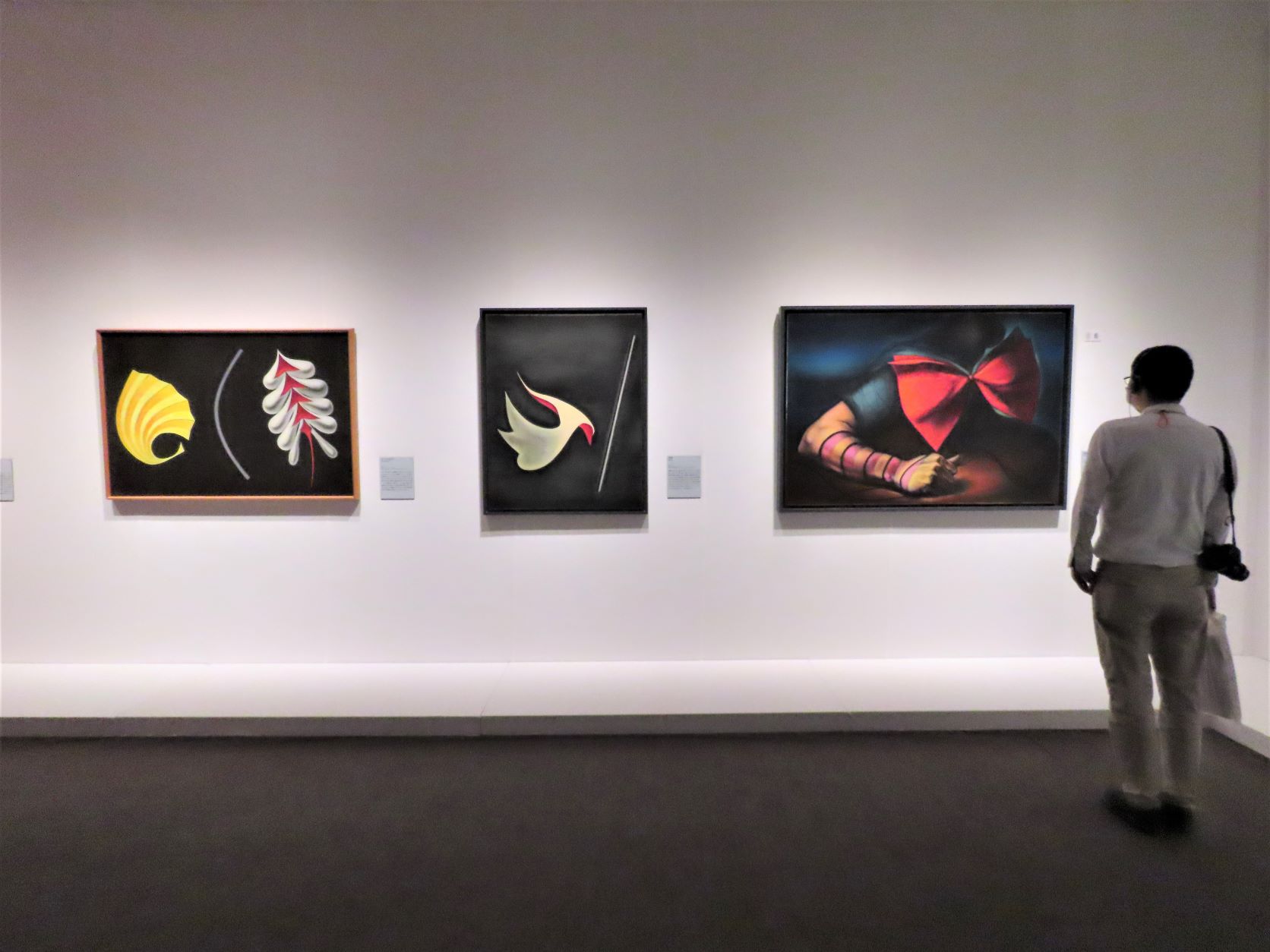
From Chapter 1 Installation view
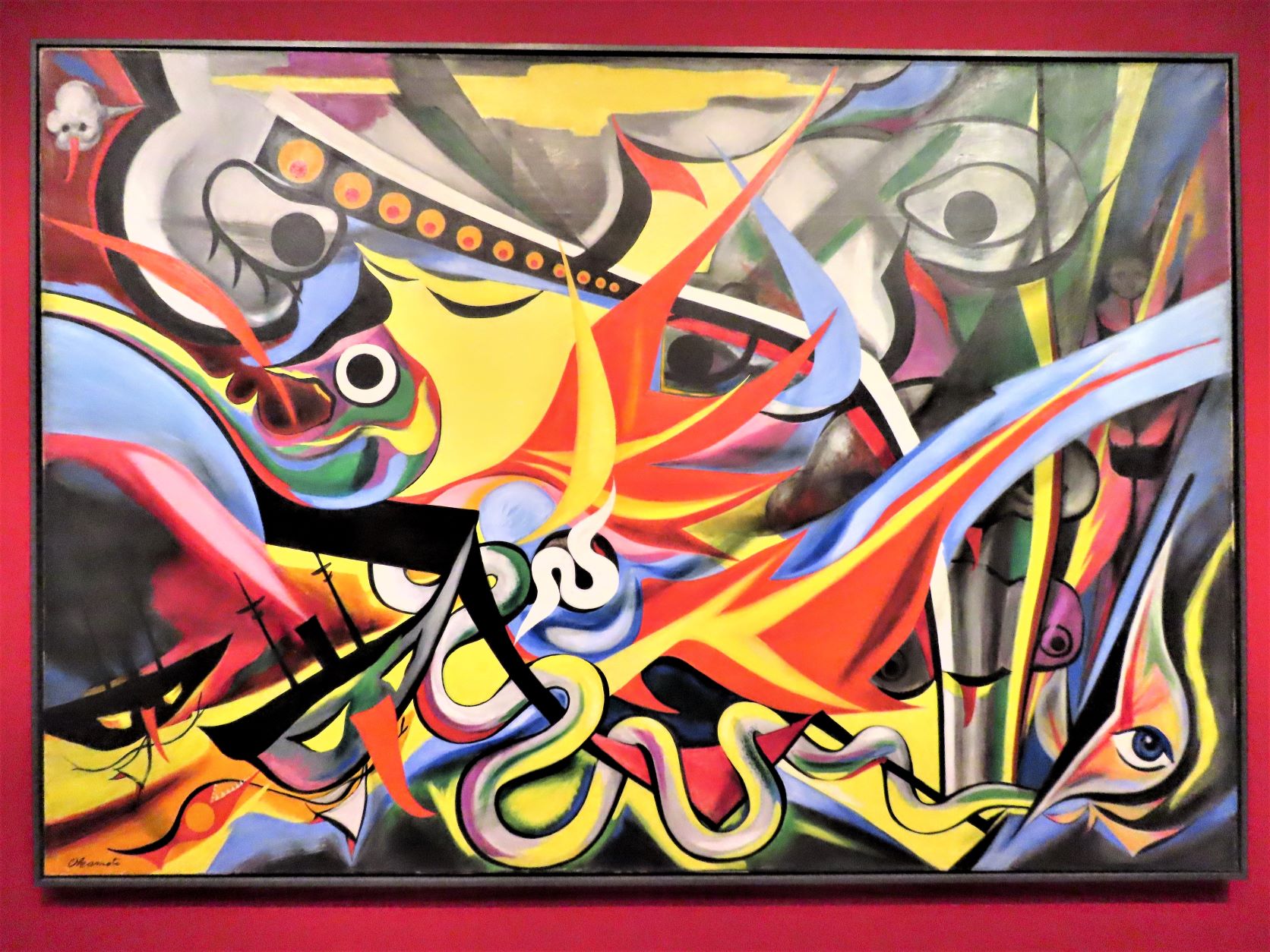
From Chapter 2 exhibition view. 《Burning Man》(1955)(The National Museum of Modern Art, Tokyo)
From the first floor to the second floor of the exhibition hall, a total of six chapters follow Taro Okamoto's painting career in chronological order, and it is structured so that you can experience it through his work.
In 1930, 18-year-old Taro Okamoto entered the Tokyo School of Fine Arts (currently Tokyo University of the Arts), and six months later he accompanied his parents to Paris. The works from his time in Europe were all destroyed in a fire after he brought them back to Tokyo, but in this first chapter, "Birth of Taro Okamoto," works that were recreated in later years are displayed. You can get to know the full picture of the early works of painter Taro Okamoto.
The second chapter, “Creative Solitude,” introduces works from the period after returning to Japan, when he formed an avant-garde art community and energetically produced cutting-edge works while using the Nishina-kai as his main activity site. It was also during this period that the slogan “polarism,” which has become synonymous with him, was born.
Many of his works respond to social events in Japan, and in the work Burning Man (1955, The National Museum of Modern Art, Tokyo), he depicts a message about the atomic bombing, as well as motifs that lead to his later representative work Myth of Tomorrow. is
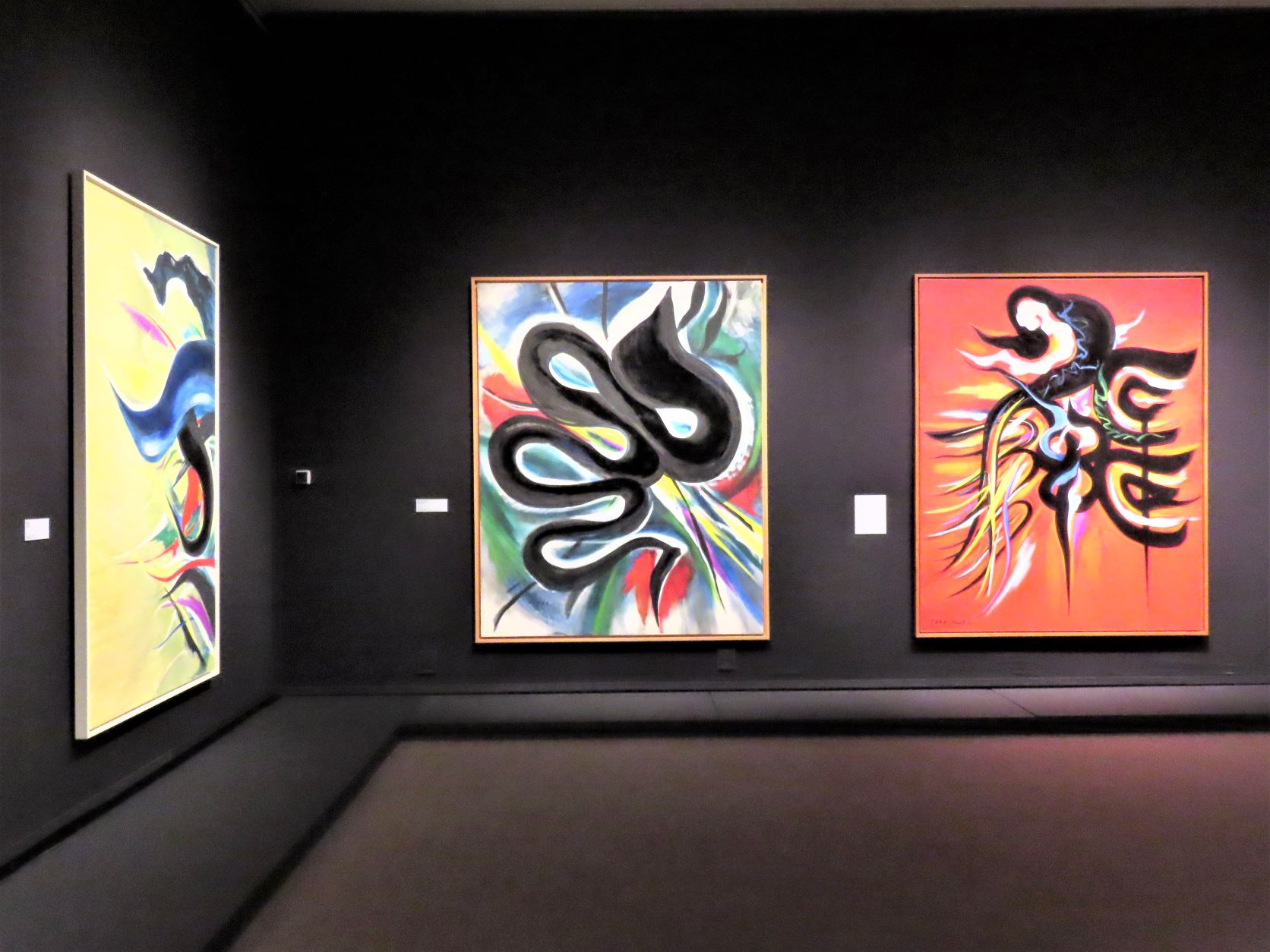
From Chapter 3 Installation view

Chapter 4 is lined with unique and vivid designs full of life. You can actually experience the "chair that refuses to sit" in the center.
In 1951, when he stumbled across a bizarre-shaped Jomon pottery that was on display as an archaeological relic at the Tokyo National Museum, he exclaimed:
"What is this!"
Taking this opportunity, Taro Okamoto discovered the fundamental life of the Japanese people in the creation of Jomon pottery. It is a famous story that he discovered the image of Japan.
Chapter 3, "The Roots of Humanity," presents works from the 1960s, when the possibilities of calligraphy and abstract painting were explored, with undulating curves influenced by Jomon pottery decoratively covering the canvas. . The group of works, which are almost like Sanskrit characters and give a strong sense of magic, have a strong impression of Okamoto's face.
The following chapter 4, "Art in the Public," completely changes the mood, entering the world of Okamoto's public art. Okamoto is known for selling almost no work, but he believed that art, like mass media such as movies and television, should be widely shared by the general public. It is interesting that the exhibited works include a variety of works that are not suitable for "artists", such as designing aliens for special effects movies.
Also, on the 4th floor, there is an exhibition of the famous “Chair that refuses to sit”, and of course the viewer can sit freely. When I sat down for a trial, I didn't feel like I was being rejected, but I had the impression that I wouldn't be able to sit for a long time. Is it a message to "Don't sit around forever, fight"?
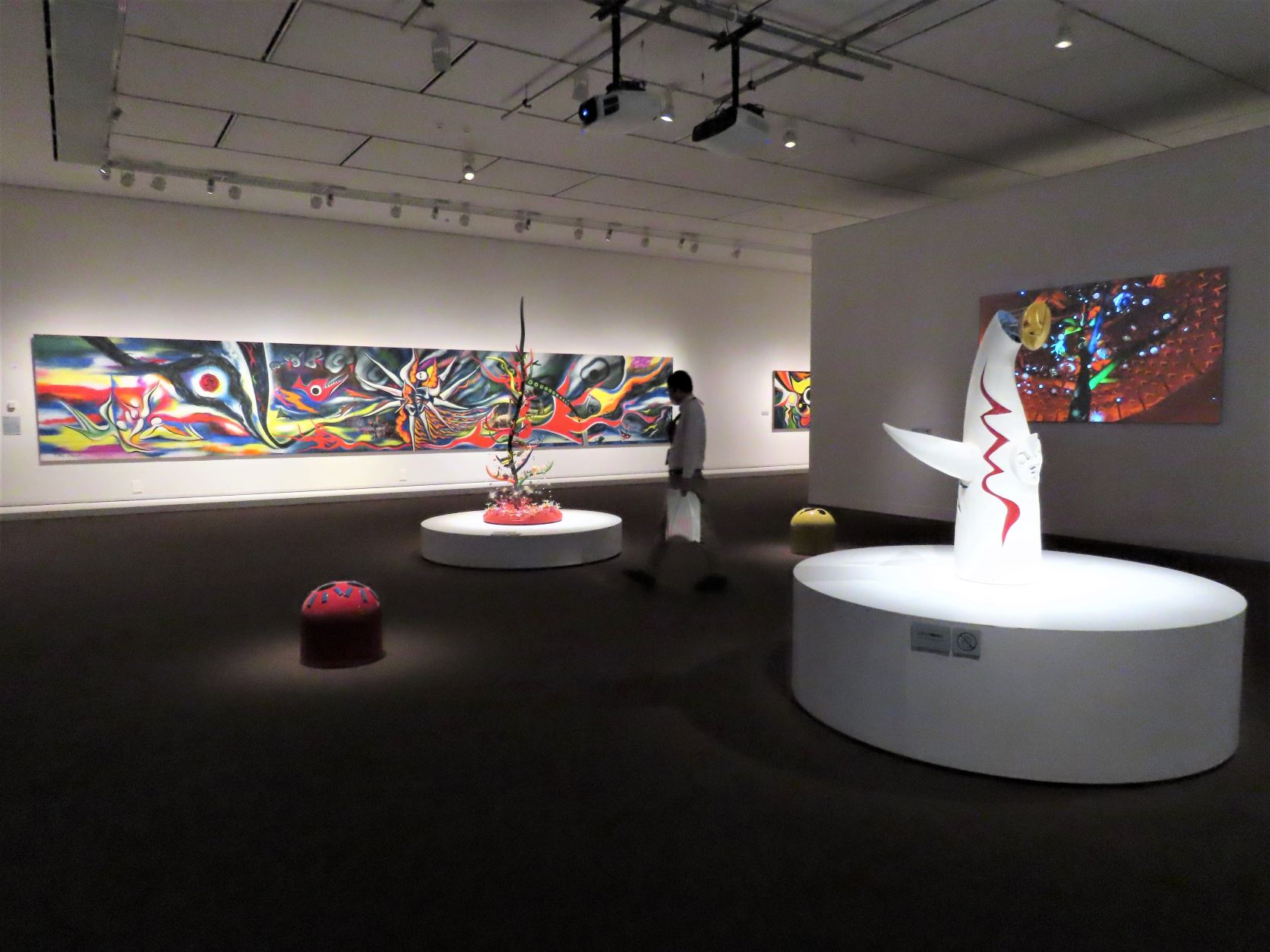
From Chapter 5 exhibition view. "Tower of the Sun" and "Myth of Tomorrow" were Okamoto's whole-hearted projects that proceeded almost at the same time.
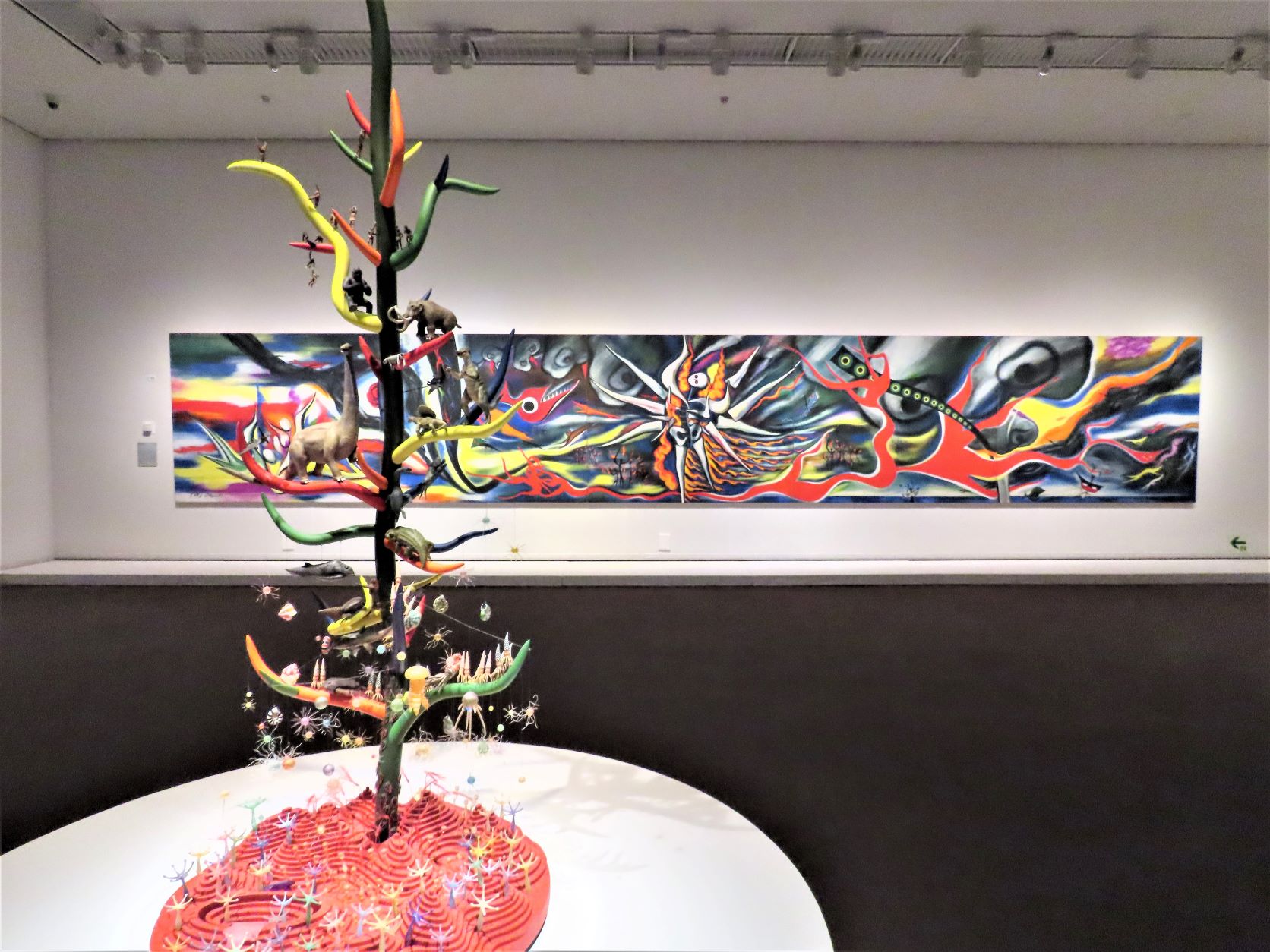
Placed in front of "Myth of Tomorrow", which emits an overwhelming force of attraction, is "Tree of Life, Foreground Model" (2017) (Taro Okamoto Memorial Museum)
What awaits us in Chapter 5, “Two Suns,” is the “Tower of the Sun,” and one of his representative works, “Myth of Tomorrow.”
The approximately 70-meter-tall Tower of the Sun, which pierces the roof of rational modern architecture, had an overwhelming presence even at the Japan World Exposition, and continues to this day as the “Taro Okamoto” in our minds. built an image. At the venue, a 1/50 scale three-dimensional model and valuable conceptual sketches are on display.
Another gigantic project that was being carried out at the same time as "Tower of the Sun" was "Myth of Tomorrow", a work that I visited Mexico many times while preparing for the Expo. In the center of the work, a human being burned by radioactive flames is depicted, and the composite image of the entire painting conveys not only tragedy, but also the energy that powerfully carves out a new destiny. In this exhibition, drawings and elaborate 1/3 size sketches are introduced.
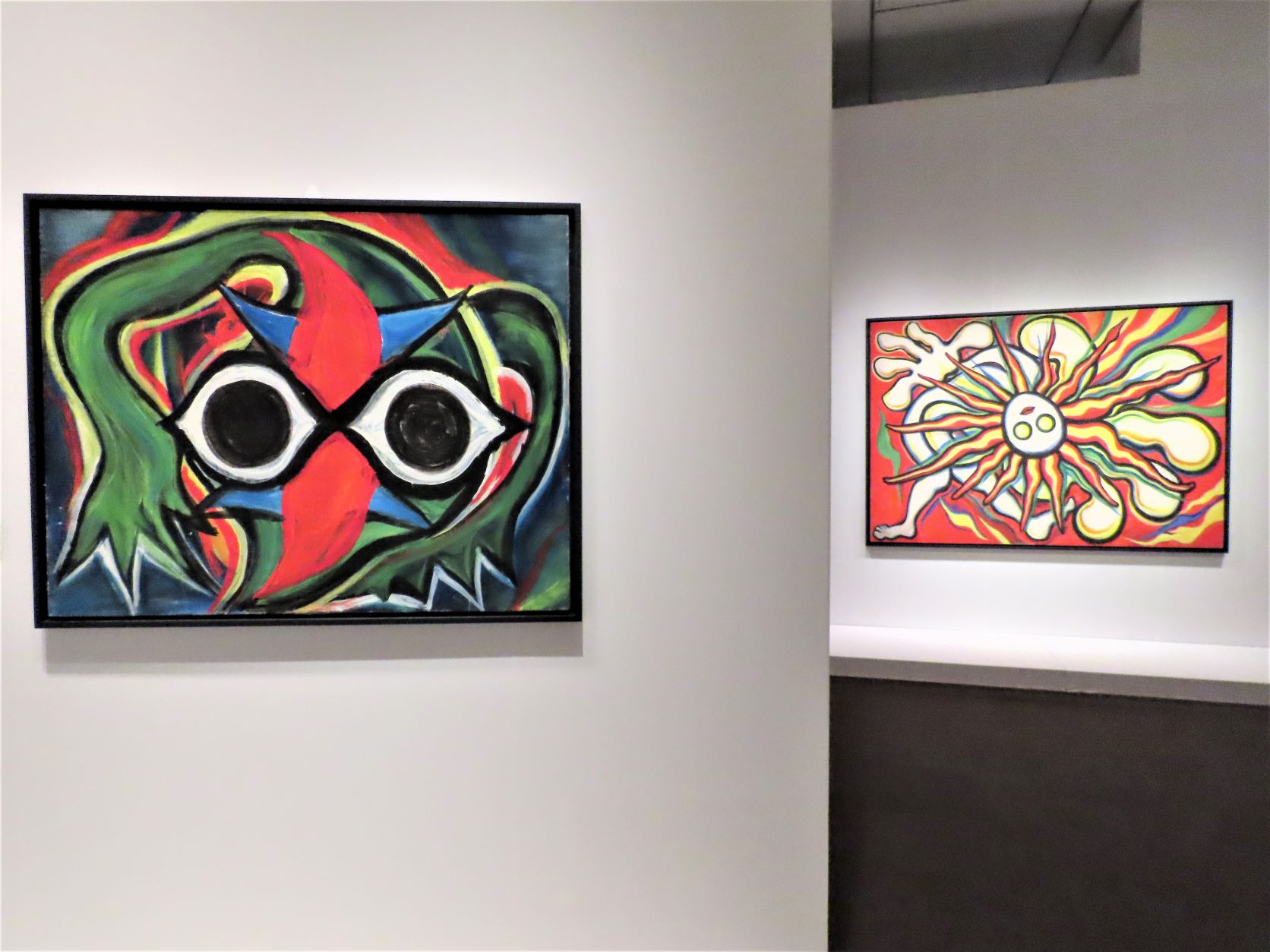
From Chapter 6 exhibition view. From left: Animal (1954, later revised) (Taro Okamoto Memorial Museum), Thunderman (1995, unfinished) (Taro Okamoto Memorial Museum)
That aloofness of "works of art" and "art".
You should peel off that raw skin and let your imagination run free.
Taro Okamoto, who devoted his life not to an "artist" but to burning the primordial, vivid life.
Although he rarely exhibited paintings in his later years, the large canvases left in his studio after his death show that he continued to explore painting until his death.
What the works on display in the last six chapters show are not the remnants of aging and dying life. I'm sure I'm not the only one who can feel the radiance of life that still shines even in his later years from the final exhibition, "Thunderman."
The exhibition will run until December 28th, which is relatively short.
By all means, I would like you to take this opportunity to face the work that Taro Okamoto has bet his life on, and sometimes challenge him.
© Taro Okamoto Memorial Foundation for the Promotion of Contemporary Art
Overview of the event

| exhibition period | October 18th (Tue) – December 28th (Wed), 2022 |
| venue | Tokyo Metropolitan Art Museum |
| Opening hours | 9:30-17:30, until 20:00 on Fridays (last admission 30 minutes before closing) |
| Closed day | Monday, September 20 (Tuesday) *Open on August 22 (Mon), August 29 (Mon), September 12 (Mon), September 19 (Mon/holiday), and September 26 (Mon) |
| viewing fee | General 2,000 yen College student 1,300 yen Over 65 years old 1,400 yen *In order to avoid congestion in the exhibition room, this exhibition requires a reservation system for a specified date and time. → Exhibition website |
| organizer | Tokyo Metropolitan Museum of Art, Tokyo Metropolitan Foundation for History and Culture, Taro Okamoto Memorial Foundation for Contemporary Art, Taro Okamoto Museum of Art, Kawasaki, NHK, NHK Promotion |
| Contact information | 050-5541-8600 (Hello Dial) |
| Exhibition HP | https://taro2022.jp/ |
*The content of the article is as of the time of the interview. It may differ from the latest information, so please check the official website of the exhibition for details.
Article provided by: Taito Bunka Marche


